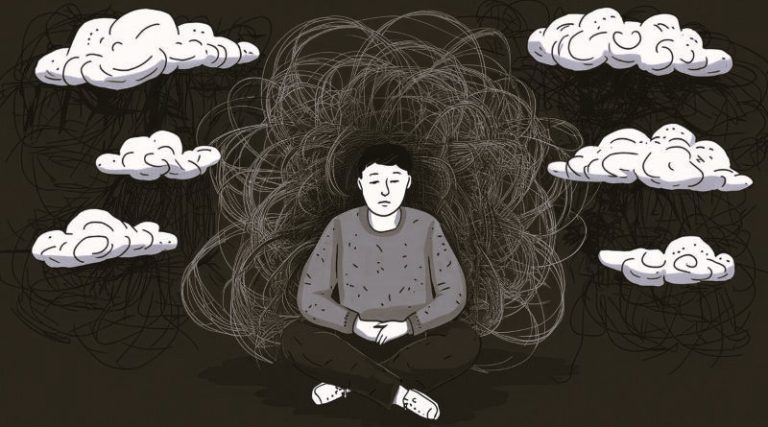Scientists have mapped the structural changes that occur in teenagers’ brains as they develop, showing how these changes may help explain why the first signs of mental health problems often arise during late adolescence.
07.25.2016
In a study published today in the Proceedings of the National Academy of Sciences, researchers from the University of Cambridge and University College London (UCL) used magnetic resonance imaging (MRI) to study the brain structure of almost 300 individuals aged 14-24 years old.
By comparing the brain structure of teenagers of different ages, they found that during this important period of development, the outer regions of the brain, known as the cortex, shrink in size, becoming thinner. However, as this happens, levels of myelin – the sheath that ‘insulates’ nerve fibres, allowing them to communicate efficiently – increase within the cortex.
Previously, myelin was thought mainly to reside in the so-called ‘white matter’, the brain tissue that connects areas of the brain and allows for information to be communicated between brain regions. However, in this new study, the researchers show that it can also be found within the cortex, the ‘grey matter’ of the brain, and that levels increase during teenage years. In particular, the myelin increase occurs in the ‘association cortical areas’, regions of the brain that act as hubs, the major connection points between different regions of the brain network.
Dr Kirstie Whitaker from the Department of Psychiatry at the University of Cambridge, the study’s joint first author, says: “During our teenage years, our brains continue to develop. When we’re still children, these changes may be more dramatic, but in adolescence we see that the changes refine the detail. The hubs that connect different regions are becoming set in place as the most important connections strengthen. We believe this is where we are seeing myelin increasing in adolescence.”
The researchers compared these MRI measures to the Allen Brain Atlas, which maps regions of the brain by gene expression – the genes that are ‘switched on’ in particular regions. They found that those brain regions that exhibited the greatest MRI changes during the teenage years were those in which genes linked to schizophrenia risk were most strongly expressed.
Dr Petra Vértes, the other first author, also from the Department of Psychiatry explains: “A lot of information already exists on the function of various genes: which parts of the cell they are important for, what biological processes they are involved in and which diseases they are associated with. Matching up MRI brain maps with the Allen Brain Atlas allows us to make connections between large-scale brain changes observed through MRI – such as thinning of the cortex – and the microscopic biological processes that are likely to underpin these changes and which may be compromised in certain disorders.”
“Adolescence can be a difficult transitional period and it’s when we typically see the first signs of mental health disorders such as schizophrenia and depression,” explains Professor Ed Bullmore, Head of Psychiatry at Cambridge. “This study gives us a clue why this is the case: it’s during these teenage years that those brain regions that have the strongest link to the schizophrenia risk genes are developing most rapidly.
“As these regions are important hubs that control how regions of our brain communicate with each other, it shouldn’t be too surprising that when something goes wrong there, it will affect how smoothly our brains work. If one imagines these major hubs of the brain network to be like international airports in the airline network, then we can see that disrupting the development of brain hubs could have as big an impact on communication of information across the brain network as disruption of a major airport, like Heathrow, will have on flow of passenger traffic across the airline network.”
The researchers are confident about the robustness of their findings as they divided their participants into a ‘discovery cohort’ of 100 young people and a ‘validation cohort’ of almost 200 young people to ensure the results could be replicated.
The study was funded by a Strategic Award from the Wellcome Trust to the Neuroscience in Psychiatry Network (NSPN) Consortium.
Dr Raliza Stoyanova in the Neuroscience and Mental Health team at Wellcome, which funded the study, comments: “A number of mental health conditions first manifest during adolescence. Although we know that the adolescent brain undergoes dramatic structural changes, the precise nature of those changes and how they may be linked to disease is not understood.
“This study sheds much needed light on brain development in this crucial time period, and will hopefully spark further research in this area, and tell us more about the origins of serious mental health conditions such as schizophrenia.”
Video
Nodes of the adolescent brain’s structural network coloured by how much they change between 14 and 24 years of age. The size of the nodes represent how well connected they are and halfway through the movie the smallest nodes are removed and only the hubs remain. The edges that are added in are the strongest connections between these hub regions and represent the brain’s rich club. Credit: Kirstie Whitaker
Reference
Whitaker, KJ, Vertes, PE et al. Adolescence is associated with genomically patterned consolidation of the hubs of the human brain connectome. PNAS; 25 July 2016; DOI: 10.1073/pnas.1601745113








